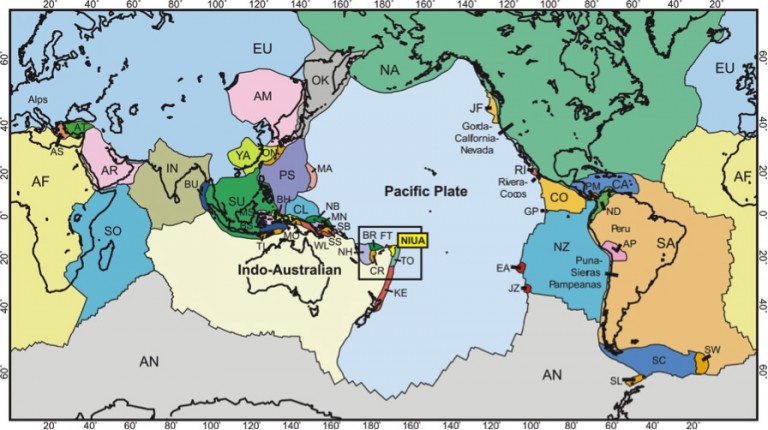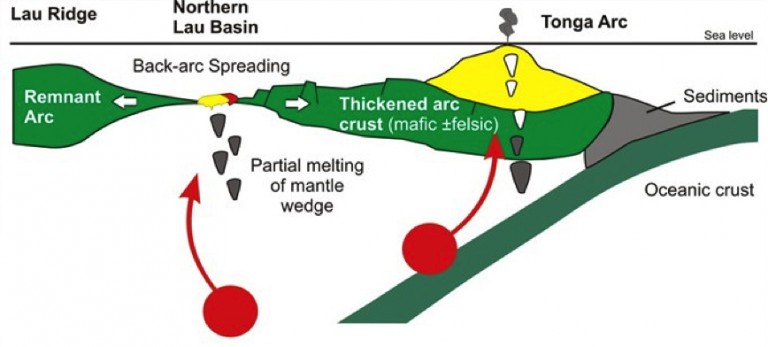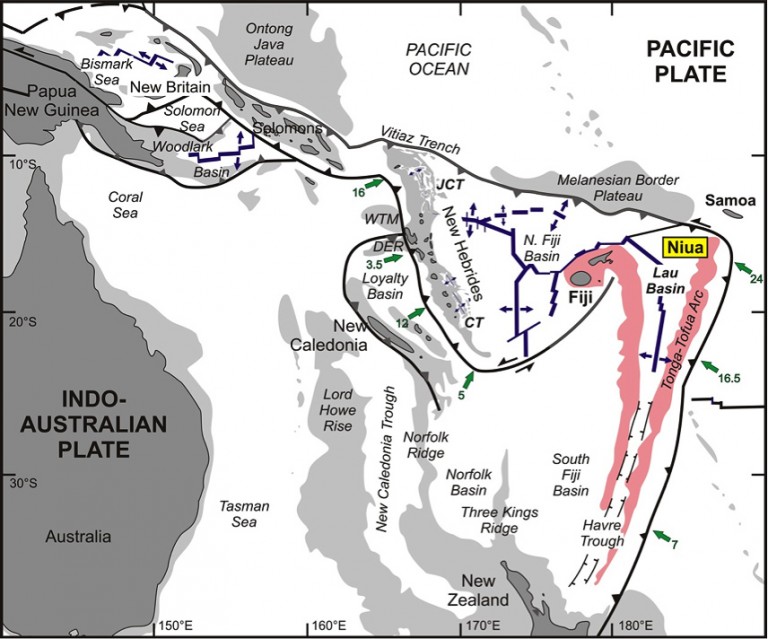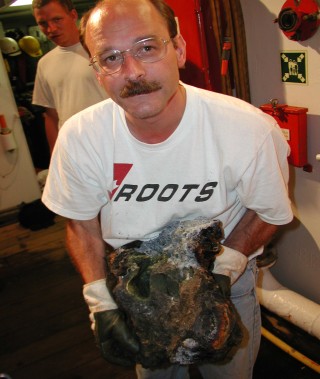The island archipelago of Tonga sits at the junction of two major tectonic plates – the Indo-Australian plate in the west and the Pacific Plate in the east. It is part of the Pacific “Ring of Fire” that encircles the entire ocean basin. The oceanic crust of the Pacific Plate was born at a spreading center in the eastern part of the ocean, beginning about 180 million years ago and still continuing today. That crust is pushed towards Australia and Asia, riding on a partially molten mantle. Where it meets the edge of the Indo-Australian Plate in the east, the now cooled oceanic crust sinks back into the mantle along a “subduction zone.”

The most obvious expressions of the subduction zones are the deep-sea trenches and the intense volcanic activity caused by melting of the crust at the base of the overriding plate. The illustration below shows the normal style of subduction, with a slab of Pacific oceanic crust and sediment descending below the “arc crust” at the edge of the Indo-Australian Plate. Volatiles, such as water in subducted sediment that are driven off the slab, contribute to melting and also give rise to the explosive eruptions that characterize the “Ring of Fire” volcanoes.

In Tonga, these volcanoes form an “arc” that stretches more than 1700 km – from New Zealand to Samoa. The curvature of the arc is partly caused by the angle of subduction. To visualize this, imagine cutting an orange (the Earth) with a knife (the slab); a deep cut makes a straight line on the surface of the orange and an angled cut makes a curve. As the slab descends below the edge of the Indo-Australian Plate, the plate begins to roll backward at the “hinge line” (like the end of a conveyor belt), and begins to tug at the crust on the other side of the arc. This “back-arc” tension causes the arc crust to split.
Around Tonga, this forms the familiar V-shape of the adjacent Lau Basin, which is opening like a zipper towards New Zealand. Where the back-arc is opening, mantle material from beneath the Indo-Australia plate wells up into the fracture, forming a volcanic ridge referred to as a “back-arc spreading center.“ The northern Lau Basin is especially well endowed with back-arc spreading centers – more than any other back-arc basin in the western Pacific. This is because Tonga sits directly in the path of the fastest moving part of the Pacific Plate, which is advancing into the subduction zone at more than 24 cm/yr.

Another peculiar feature of the Tonga Trench and Tofua volcanic arc is that they are abruptly terminated by a giant fracture zone in the north before reaching Samoa. Here, a major break in the crust – known as the Vitiaz Fracture Zone – has developed, and the Tonga Trench makes a sharp turn to the west. The fracture zone acts like a giant pair of scissors, cutting the Pacific Plate as it advances past Tonga. The Pacific Plate in the north continues on its westward journey to Asia, and the Pacific Plate in the south dives into the subduction zone. This rip in the subducting slab is also deforming the northern Tonga Platform, creating openings in the arc crust into which a range of magma types are being intruded ‒ among them the large Niua Volcanic Complex.

